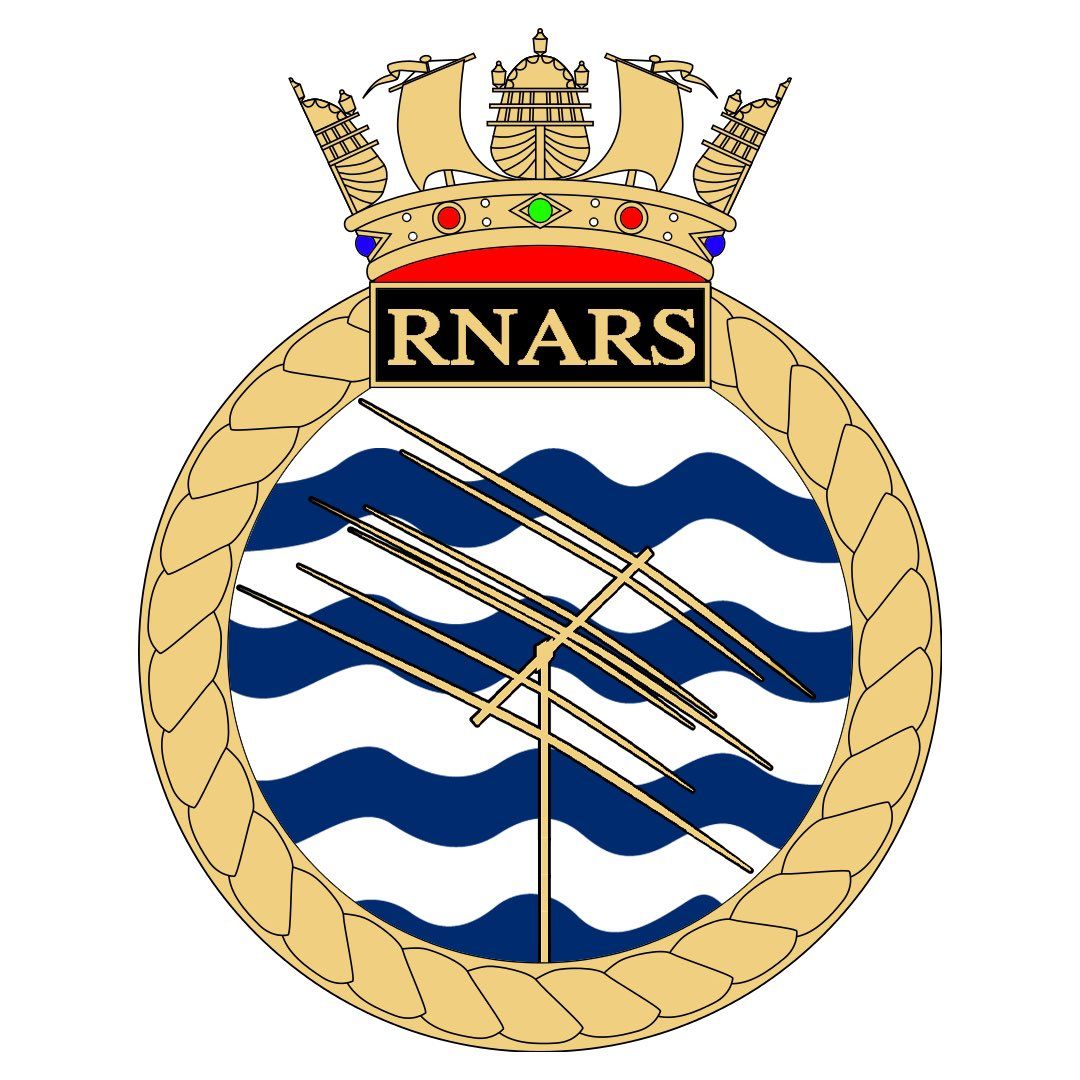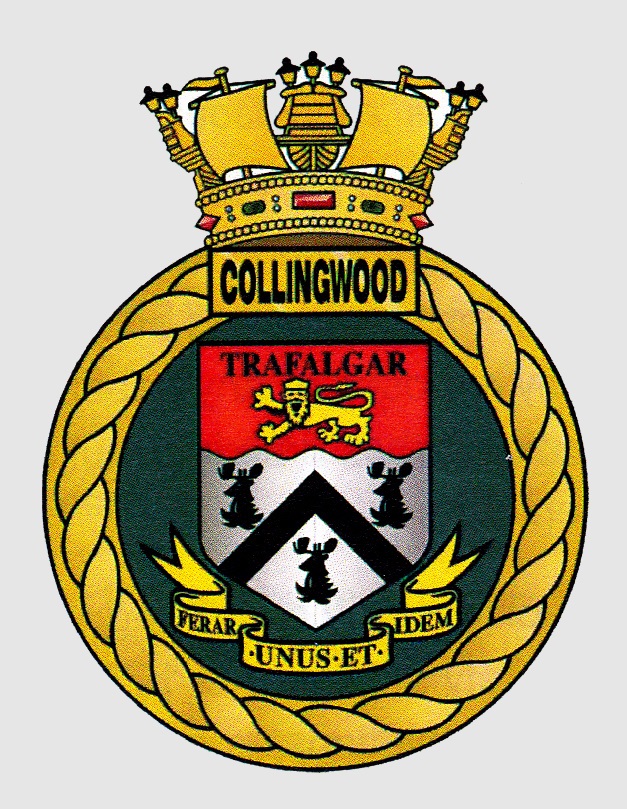


HMS Collingwood
The HQ Shack of the RNARS is in HMS Collingwood a 'stone frigate' or shore establishment in Fareham, Hampshire (WAB: SU50 LOC: IO90ju). HMS Collingwood is the Royal Navy's largest training establishment. It is the headquarters of the Maritime Warfare School and Surface Stream.
History of HMS Collingwood
HMS Collingwood gained its name from Lord Collingwood who was a distinguished Admiral at the turn of the 19th century.
Lord Collingwood, 1748-1810
Admiral Collingwood had a distinguished Naval Career fighting both the French and the Spanish navies over a period of nearly 20 years. He was a great colleague of Lord Nelson, and took command of the British Fleet when Nelson was mortally wounded at the battle of Trafalgar.
After Trafalgar, Collingwood was raised to the peerage as a Baron and spent the next five years at sea blockading Cadiz and Toulon as Commander-in-Chief in the Mediterranean. He died at sea off Minorca in 1810 and was later buried close to Nelson in St Paul's Cathedral.
The First HMS Collingwood
Launched at Pembroke in 1841, the first HMS Collingwood was an 80 Gun Wooden Man-o-War. She was 2,585 tons, 190 feet in length and had a crew of 750
The Second HMS Collingwood
The second HMS Collingwood was a twin-screw, barbette battleship of 9,500 tons, 325 feet length and the first battleship to steam at 16 knots. Her main armament of 4-12" guns in twin mountings fore and aft set the pattern for later classes of battleships until the advent of the Dreadnought in 1906.
The Third HMS Collingwood
She was launched at Devonport in 1908. Displacing 19,250 tons, 500 feet long, she was capable of 21 knots. The complement was 769 officers and men.
The Fourth HMS Collingwood
The present HMS Collingwood was built as a new entry Training Establishment for "hostilities only' ratings of the Seaman Branch. The 200 acres it covers were compulsorily purchased in 1939 for just over £7,000; the land owner claimed that it was of the finest cornland in the South of England but, in local opinion, it was much the best snipe marsh in the country.
It was certainly wet and boggy and it took until the mid 1950s to clear sufficient water to allow the construction of anything better than a single storey building or concrete prefab. Initially, buildings were erected to form four distinct but identical sections with common Headquarter buildings; the whole surrounded the Parade Ground which was the focal point of the training.
On 10 January 1940 the Establishment was commissioned as HMS Collingwood under the Command of a Commodore; training began a week later with batches of about 1000 trainees joining every 3 weeks for a 10-week course.
Subsequently, the Branch assumed additional responsibility for weapons and became known as the Weapon and Radio Branch and later, the Weapon and Electrical Engineering Branch. In 1979, as a result of the restructuring of the whole Engineering Branch, it became the Weapon Engineering Sub-Branch, passing Electrical Generation and Distribution to the Marine Engineering Sub-Branch and gaining Explosives from the Operations (Seaman) Branch.
In 1993 when HMS Mercury was decommissioned the Signal School moved to HMS
Collingwood.
In 1963 a programme was put in hand to replace, over a period of 25 years, all the original huts with new buildings and modern facilities. Tall 60's-style Junior Ratings' Accommodation Blocks were opened by HRH The Princess Margaret in 1966 but they were pulled down twenty years later and replaced by modern high quality accommodation providing single and 4 berth messes for both male and female ratings.
Maritime Warfare School
In 2002 HMS Collingwood became the lead establishment for the Maritime Warfare School (MWS), in support of the closure and transfer of warfare training from the former HMS Dryad.
The present HMS Collingwood was commissioned in early 1940 as a new-entry training camp for hostilities-only ratings. The establishment comprised 4 training divisions and a gunnery section responsible for the final 3 weeks of a class’s training. Shortly after, a separate signal section was added under a Signal Commander for the training of Ordinary Signalmen and Ordinary Telegraphists.
After the war, the Electrical Branch was formed to maintain, design and prove increasingly complex radars, sonars and communications systems. HMS Collingwood became the School of Electrical Engineering in 1946 and took over the training of all officers and ratings, with the exception of the Fleet Air Arm, in the maintenance of electrical and radio equipments in the Fleet.
Subsequently the branch became responsible for weapons engineering and became known as the Weapon Electrical Engineering branch, later still becoming the Weapon Engineering sub-specialisation on passing responsibility for electrical generation and distribution to the Marine Engineers.
On the demise of HMS Mercury, the home of communications training since 1941, history turned full circle in 1993, and a Communications Faculty was added in the HMS Collingwood.
Further expansion followed in 1995 when training of junior Weapon Engineer Officers transferred to the site following the closure of the Royal Naval Engineering College at Manadon, Plymouth.
The MWS is now part of the Flag Officer Sea Training (FOST) organisation, delivering Warfare Training on five sites; Horsea Island, HMS Temeraire and HMS Excellent all in Portsmouth, Hampshire and HMS Raleigh in Cornwall and of course HMS Collingwood in Fareham, Hampshire.
The aim of the MWS remains as ever to train Officers and Ratings for the Fleet who are ready to fight and win.